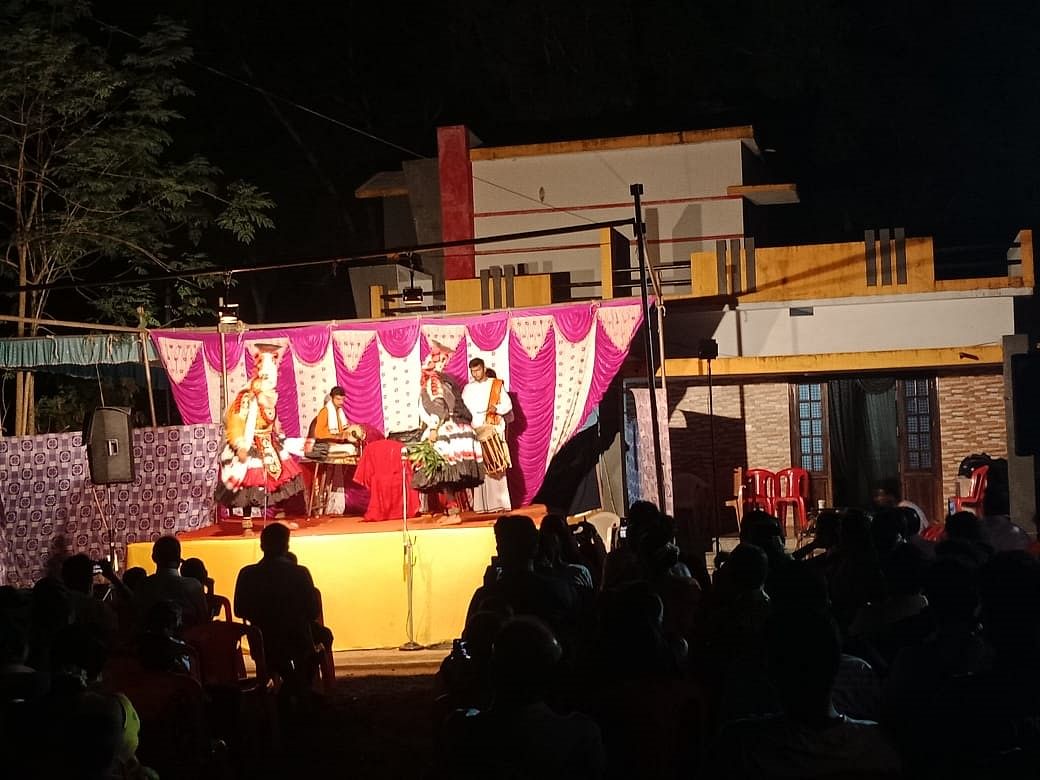
The performing arts of the Karnataka coast began going the extra mile to foster communal harmony in the early 2000s. Today, they are playing a major role in bridging religious divides.
There are many instances of Yakshagana, a grand operatic form that tells stories from the Hindu myths, receiving support from Muslims and Christians. A Muslim family recently hosted a Yakshagana show at their home.
The ‘Shamanthaka Ratna’ episode appears in Vishnu Purana and the Bhagavata, and helped Hindus and Muslims to bond recently.
“I had built a new home and did not have the space to put up a stage for a Yakshagana show. My neighbour Abdul Razak offered his front yard and his family helped me set up the stage,” says Nagesh, also an amateur Yakshagana artist, told Showtime. After the evening namaz, the space became alive with an operatic spectacle.
“The entire family sat through the entire three-hour episode with their relatives, and at the end hugged me for treating them to a story from Vishnupurana,” he says.
The story of Jesus has also been adapted to the Yakshagana form. The first author of a Yakshagana show on Christ was Muliya Keshavaiah — it was called Yesu Christa Mahatme and presented in 1970. Some people protested, saying it was ‘appropriation’ for the cause of evangelism, but Keshavaiah convinced them Yakshagana was more art than religion.
Mohammed Ghouse, Jokatte Mohammed and Jabbar Samo learnt Yakshagana in their growing years, and are now accomplished exponents. Arshiya, from a devout Muslim family, learnt Yakshagana as a young girl, and has performed it in across coastal Karnataka.
Now in her 20s and employed in an automobile company, she was just 10 when she was fascinated by the shows she saw in her native village of Okkethur Mada in Puttur taluk. She is now taking advanced training at Kadali Kala Kendra in Mangaluru. Perhaps the first Muslim woman to make a mark in Yakshagana, she is especially fascinated by Devi episodes such as Mahishasura Mardini.
Mohammad Ghouse from Nellikatte village near Kundapura has remained one of the top Yakshagana artistes since the 1970s. He gave up a job in Saudi Arabia to continue his passion for the art. He rejoined the group Yaksha Saurabha Pravasi Mela and has donned many ‘veshas’ (roles), including those of Veeramani, Bhasmasura and Arjuna.
M L Samaga, former president of the State Yakshagana Bayalata Academy, is delighted at the spread of the art. “My father Lakshminarayana Samaga portrayed Jesus Christ for the first time in the 1970s in an episode of Yesu Christa Mahatme, but soon I was offered the role as I was younger.
I have played the role about 15 times. Religious bigotry should be kept away from our arts.”
As the right wing tries to divide communities for political gain, people in many towns and villages on the coast continue to live together, enjoying their passion for a magical art that blends music, dance, drama and storytelling.